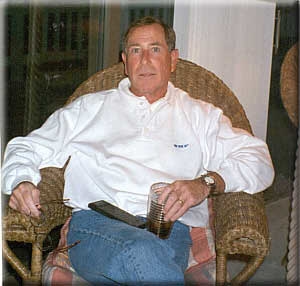Golf Enthusiast Finds Unexpected Hazard
Barry Koppel was born in 1944 and raised in Baltimore, Maryland. He graduated from the University of Maryland in 1966 with a degree in finance and went to work for the Xerox corporation in 1967. His first job with Xerox was as a sales representative and later he became a manager. He quickly vaulted up the corporate ladder. After ten years in Baltimore, he was promoted to marketing manager and moved into the Xerox headquarters in Rochester, New York. Barry was making a name for himself as a smart, energetic and effective leader.
After three years in New York, Barry moved his wife, Wendy and two daughters, Robin and Laurie westward, to Pasadena, California, still working for Xerox. He was now a "hot commodity" and was approached by several top-notch hi-tech companies on the west coast. In 1987, he left Xerox and for the next ten years, was the vice-president for three different companies on the West Coast. His hard work -- his investment in his family's future -- enabled him to retire in 1997, at the tender age of 53.
WORKING OUT AND WORKING ON HIS GAME
He was now free to improve his health, spend more time with his family, explore the world and refine his golf game, which had always been his passion. He was playing golf up to six times a week and had a regular fitness routine that included weight lifting. After several years he lowered his handicap to seven strokes.
Barry and Wendy began spending more and more time at their second home, located outside of Palm Springs. Life was good. There was plenty of sunshine, fresh squeezed orange juice and fresh cut golf courses. Their daughters were grown and living on their own. When Barry was not working out or golfing, he was exercising his mind. He enjoyed reading, monitoring his investments and, like most of us, cheering for his favorite college and professional teams. Barry and Wendy were living the life they had always dreamed of: each day offered the prospect of something new and wonderful. They were traveling, hiking and enjoying each other like newlyweds.
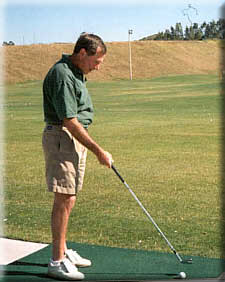
FROM A NAGGING COUGH TO SOMETHING FAR WORSE
In the fall of 2001, Barry developed a nagging cough and occasional flu-like symptoms. He thought he had a cold and figured he could "play through it," but the symptoms persisted. One week, after playing several rounds of golf, he noticed an unusual pain in his shoulder and neck area. He met with his internist, who felt he was suffering from a viral infection and prescribed antibiotics. Unfortunately, the antibiotics had no effect, and Barry returned to the doctor. A chest film was taken which revealed a small subpleural-based mass in the left upper lobe, along with a pleural effusion. Aspiration of the fluid failed to detect malignant cells. A CT scan was then taken and revealed what appeared to be two pleural-based masses, plus additional fluid.
On December 10, 2001, Barry was admitted to the West Hills Hospital and Medical Center in West Hills, California. He and his doctors wanted to know what was going on in his chest.
After consulting with his surgeon, the plan was to extract a tissue sample from Barry's left lung. On December 10th, Barry underwent a fiber optic bronchoscopy, thoracoscopy with biopsy, and talc pleurodesis. During the thoracoscopy, the surgeon saw tumor spreading diffusely throughout the pleural space.
Pathological testing on the biopsied tissue resulted in a diagnosis of malignant mesothelioma. The cell type was epithelial. Pathologists at the IMPATH laboratory in Los Angeles also examined the specimens and using immunohistochemical staining, confirmed the diagnosis and cell type.
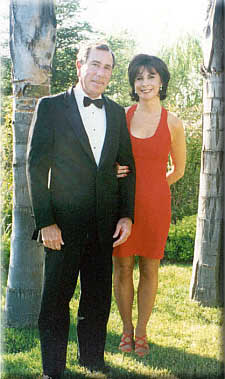
After the surgery, Barry and Wendy met with an oncologist affiliated with the hospital. In his jargon-laced medical opinion, "the mesothelioma was not resectable with curative intent", radiation therapy was not an option with such diffuse disease, and only chemotherapy could be offered, that is, chemotherapy would only make Barry more comfortable but it wouldn't cure him. The oncologist then discussed alternative treatments, including anthracyclines, Capecitabine, Gemcitabine and anti-NGA-genesis factors available in clinical trials.
Oh Lord -- what a difference a few days had made. Just nine days earlier he was admitted for exploratory testing, and now he was being sent home with a doctor's prescription that in essence said "why bother?" Barry viewed this course of action as " unacceptable!" He knew there just had to be an alternative that offered hope, it was just a matter of him hunkering down, researching his options, and picking the best doctors who had the best track record for treating similarly situated patients.
EPP CHOSEN TO SOLVE THE PROBLEM
Immediately, he and his friends and family began an intense research on the Internet and discovered Drs. Robert Cameron and David Sugarbaker.
The next week, he met with Dr. Cameron at the UCLA Medical Center. Dr. Cameron reviewed Barry*s records and discussed the surgical alternatives of pleurectomy with decortication versus extra-pleural pneumonectomy. Dr. Cameron prefers pleurectomy with decortication. Barry also met with Dr. Sol Hamburg, an oncologist at Cedars Sinai Medical Center in Los Angeles, who was offering clinical trials for mesothelioma that relied on chemotherapy combinations.
Deep in his gut, Barry knew that he wanted to aggressively attack this cancer. It is his nature to solve the problem - head on. He and Wendy decided on the extra-pleural pneumonectomy (EPP) with heated intra-operative chemotherapy with Dr. David Sugarbaker at the Brigham & Women's Hospital in Boston, Massachusetts. It was time to leave the land of milk and honey and head back East.
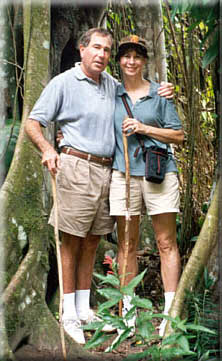
On January 31, 2002, Dr. Sugarbaker performed the procedure. The family was relieved when after just four hours Dr. Sugarbaker came with the news that Barry's surgery went extremely well and he was able to remove all visible cancer. However, Barry's experience was not without some complications. During his post-operative recovery, he suddenly complained of increased shortness of breath and heart problems.. Subsequent testing revealed pulmonary embolisms in the right upper and lower lobes. He was readmitted to the ICU two times and his condition eventually stabilized with treatment. With the amazing attention of Dr. Sugarbaker's "team" and the exceptional nurses, Barry was discharged on February 28, four weeks to the day after his admission.
Upon his discharge, Barry was, according to Wendy, "as weak as a cat and as thin as a rail." He was on oxygen 24 hours a day. He had no appetite and had to force himself to eat. He tired very easily and did not have good days or bad days, just good hours or bad hours.
WORKING HARD ON THE ROAD TO RECOVERY
After several weeks, his strength gradually increased and he no longer required oxygen. He returned to his home in California, 20 pounds lighter than when he left, but filled with hope. He also had a date to keep. His older daughter, Robin, was getting married on May 18th, and he had given her his word that he would be there to walk her down the aisle. Barry kept his word, and enjoyed every second of that triumphant escort.
On June 20, Barry underwent his first chemotherapy treatment consisting of Cisplatin and Alimta on a compassionate use basis. He has completed four treatments, which are administered every three weeks. He has now had a clean CT scan and will soon return to Boston for his six month follow-up.
Barry is working hard to regain all his strength. He meets with a physical therapist several times a week. He has gained back approximately eight pounds but still experiences left-sided pain if he tries to swing a golf club. He is working harder each day to become the man he was, a short eight months ago.
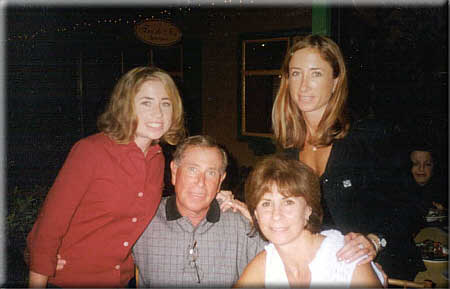
The Koppel Family
As it turns out, Barry was so good the first time that his second daughter, Laurie, also decided to get married. She, too, has made her Daddy promise to walk her down the aisle, and she's getting married on March 22, 2003. After having a lung removed, Barry may have less than half of his lung capacity, but his heart has grown bigger, and his fondness for his family has soared. He said he would happily deliver his daughter to the altar even if Laurie was getting married at the top of El Capitan in Yosemite Park
Barry understands that stress and worry will not help his recovery. Yet he is angry that his life has been compromised by a deadly cancer that was the result of his exposure to asbestos. Barry knows that his mesothelioma was preventable, as the companies responsible knew the risks but failed to warn him and others. It chaps him to think that company executives opted to use asbestos fibers over alternative materials simply because asbestos was a few pennies cheaper. Barry and Wendy both feel robbed, but they try not to linger on the negatives, as bitterness only feeds the monster that the asbestos companies create.
*** POSTED AUGUST 27, 2002 ***
An Update -- 10/13/03
Barry continues to see Dr. Sugarbaker every four months for a follow-up CT scan and exam. "So far so good." It's been nearly two years since his diagnosis. He says that compared to the original prognosis, he's been pleasantly surprised with his recovery. He urges those similarly situated to have a little faith and keep a positive attitude.
He gladly reports he did indeed walk his daughter Laurie down the aisle to matrimony. He is looking forward to grandchildren. He plays golf as often as he can and tries to keep himself busy. Four months ago he began to work with the Meals-on-Wheels charity, and finds great joy in that. He welcomes calls from other mesothelioma patients and considers it an honor to help other families and patients.
Mr. Barry Koppel passed away on January 9, 2005

